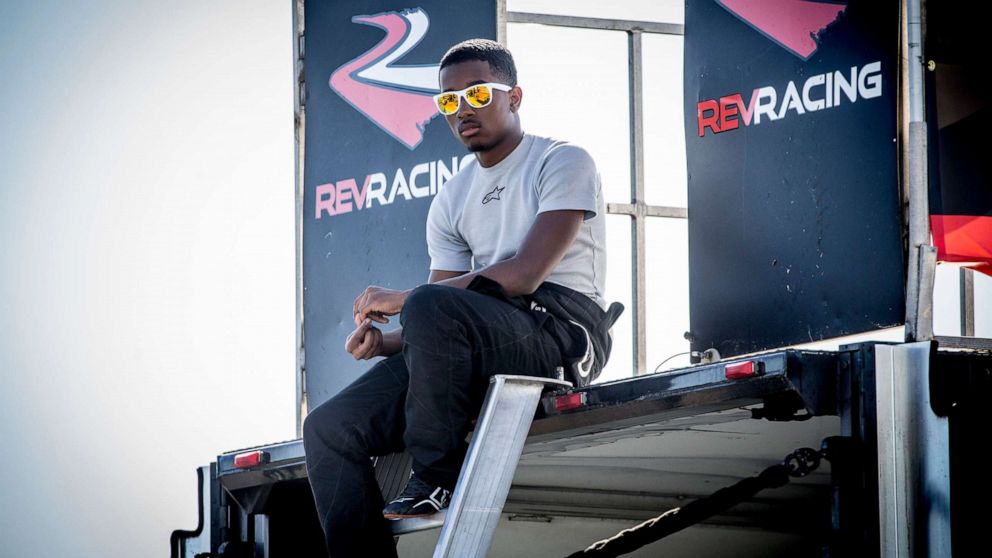[ad_1]
The 18-year-old also is planning to attend Winston-Salem State University.
6 min read
At 18, Rajah Caruth already has a trophy case filled with medals and awards from competitive driving, from races all over the country.
He’s just getting started.
The soon-to-be Winston-Salem State University freshman already has his NASCAR license, and he has big dreams to become one of the sport’s top drivers like Bubba Wallace, whom he considers a role model.
But the journey for Caruth, like for most African American drivers, hasn’t been easy. Caruth didn’t grow up in a racing family, had no connections and didn’t know much about how to make his dream a reality. Most of what he knew about racing came from being a fan of cartoon characters like Lighting McQueen and Speed Racer.
Caruth attended his first race in middle school.
“That really flipped the switch,” he said. “That was the point where I realized that this is what I want to do, this is what I want to put my life and my career into.”
NASCAR currently has just one Black driver in the top flight: Wallace.
In recent weeks, he’s emerged as a new face of the franchise because he has “Black Lives Matter” on his car and initial reports of a noose found in his garage, which led to an FBI investigation.
In the wake of that story, many in the NASCAR community stepped up and supported Wallace, embracing Black Lives Matter and giving young drivers like Caruth hope for the future.
“He’s been a good role model, a really good role model, and an ambassador for the sport,” Caruth said of Wallace. “He’s been a really good person for me to look up to, just in terms of how to carry myself, online and at the racetrack, how to treat people, how to deal with criticism and just mean people.”
During the Honor QuikTrip 500 race at Atlanta Motor Speedway, NASCAR President Steve Phelps had drivers shut down their cars so he could read the following message over the public address system:
“The Black community and all people of color have suffered in our country, and it has taken far too long for us to hear their demands for change. Our sport must do better. Our country must do better. The time is now to listen, to understand and to stand against racism and racial injustice.”
Caruth said that while he’s personally faced issues regarding his race, it’s been on a “much smaller” scale than Wallace’s battles with online trolls and attacks via social media.
“I’m definitely not going to act like, you know, I had the worst time possible, but I definitely had my fair share of interactions that were not of the positive sort,” Caruth added.
Seeing more people who look like him in and around racing, even if not behind the wheel, has been encouraging, he said.
“There aren’t really many of us drivers, but there are a lot of us behind the scenes,” said Caruth. “It’s good to be on pit road and see Mike Metcalf and Tigger and everybody on pit road, you know, people of color that you know got my back. And it’s cool to see them whenever I go to a cup race.”
In 2010, NASCAR launched its Drive for Diversity Development Program, which includes Caruth now and, previously, Wallace. And in 2017, the program hired Jusan Hamilton, the first Black race director.
Caruth said he knows how to become a champion driver: “You can’t take ‘no’ for an answer.”
“People will say, ‘Oh, you don’t have experience, or, you know, you’re this, that, and the other,'” he continued. “You really just have to stay focused. If you know you can drive, then go show it. If you stay true to yourself and make sure you surround yourself with your family, with good people, you’ll be able to do great things.”
[ad_2]
Source link

